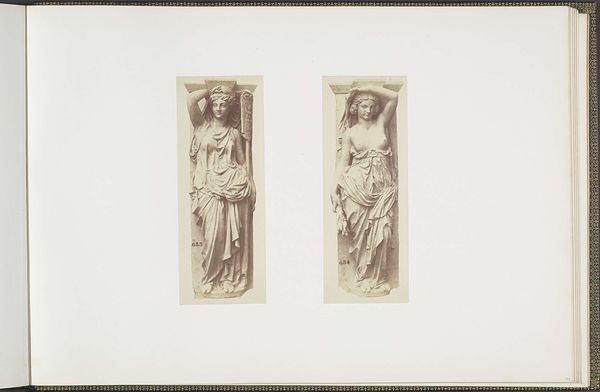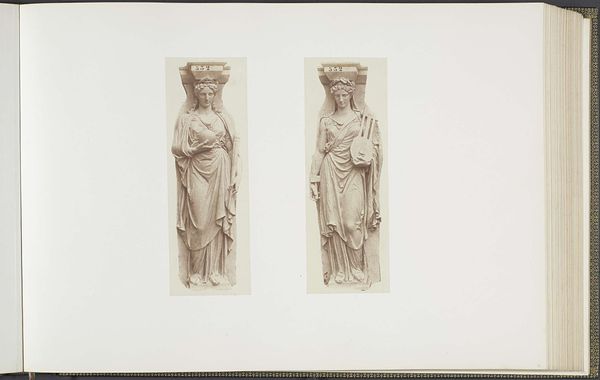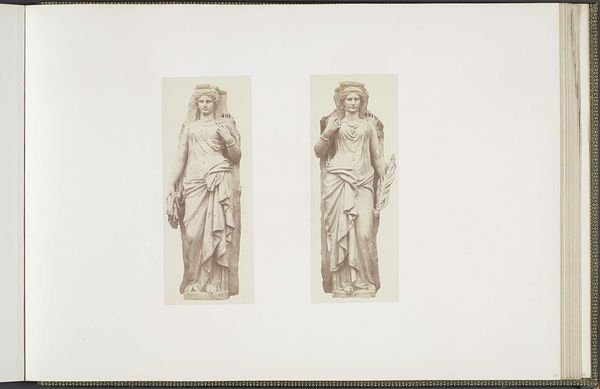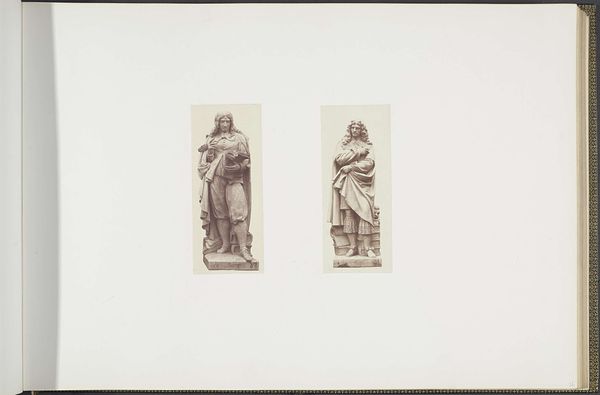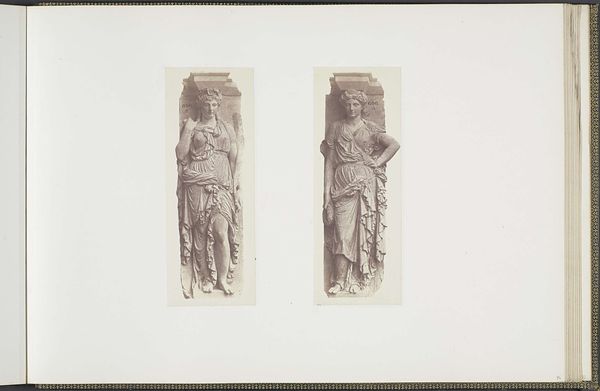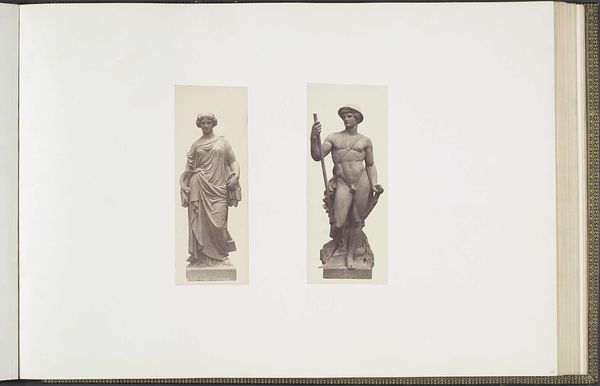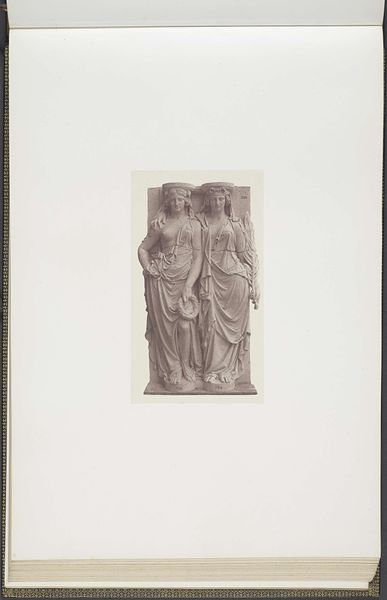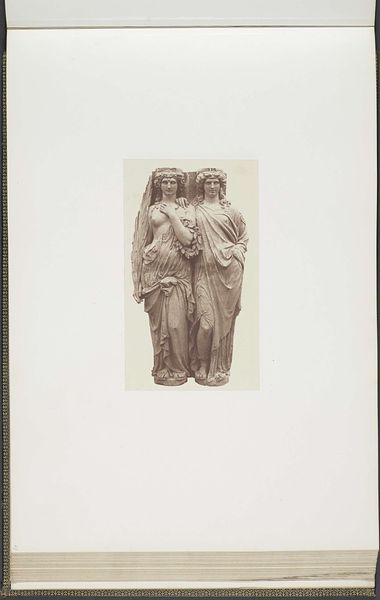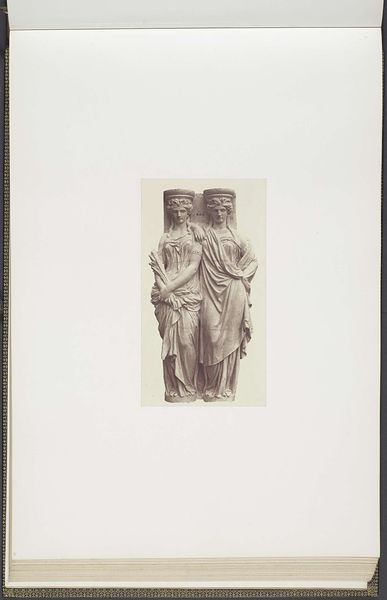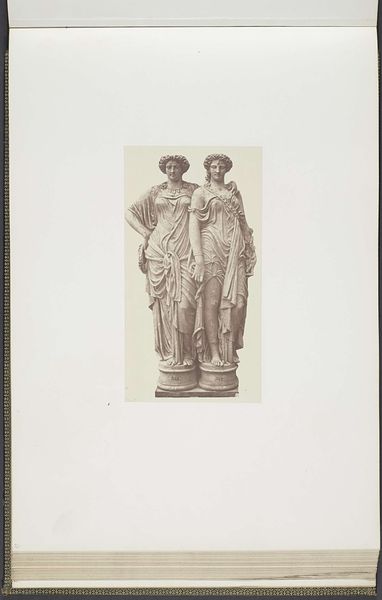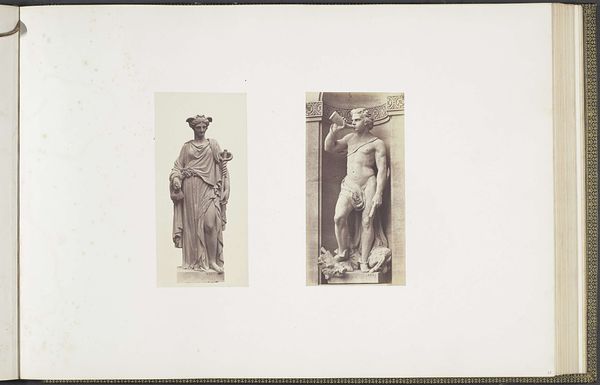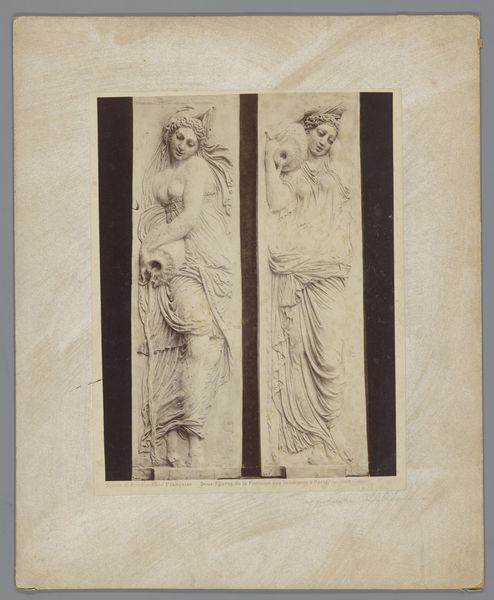
Gipsmodellen voor kariatiden op het Palais du Louvre door Jules Cavelier c. 1855 - 1857
0:00
0:00
print, photography, gelatin-silver-print
# print
#
greek-and-roman-art
#
landscape
#
figuration
#
photography
#
gelatin-silver-print
#
academic-art
Dimensions: height 378 mm, width 556 mm
Copyright: Rijks Museum: Open Domain
Curator: This gelatin silver print, currently held at the Rijksmuseum, captures Jules Cavelier's plaster models for caryatids intended for the Palais du Louvre, dating from approximately 1855 to 1857. Quite a mouthful, isn’t it? Editor: My initial thought is, well, monumental! Even in this smaller photographic form, they still project that weight-bearing stoicism... almost resigned elegance. Curator: Exactly! It’s intriguing how Edouard Baldus’s photography documents not the finished architectural element but rather its more malleable precursor in plaster. There's a whole unseen industry of artisans implied here, isn't there? Producing these elements en masse for grand projects like the Louvre. It gives us a glimpse behind the scenes. Editor: Absolutely. Baldus gives prominence to the material reality—the means of producing this ornamentation. These caryatids weren't conjured into existence; they were molded, cast, and refined through labor. These weren’t born of pure inspiration; their conception involved workshops and repetitive handwork! We think of "art" adorning buildings, but what does it say about societal values, even burdens, attributed to this gendered image of draped women? Curator: The photographic medium here itself is so interesting too. It’s not just documenting, but subtly transforming. Baldus isn't celebrating artistic genius, but instead shows mass-produced components waiting their architectural purpose. I also think this subdued, monochrome image makes one focus on form. The graceful draping of the robes, the contrapposto stance... I feel that tension between ideal classical beauty and the industrial reality beneath. Editor: That intersection’s key! This image invites questions. Questions about artistic integrity when something becomes decorative on a grand scale... and maybe too, the photographic image claiming to offer an unmediated view, when every stage of its production affects what's captured! Curator: Thinking about it now, it's both a celebration and critique. Isn't art always about the artist's gaze? To photograph this in the atelier allows this artwork to continue living with a new audience. I am quite thankful for that. Editor: A fascinating look, both forward and back at ways the art and life entwine!
Comments
No comments
Be the first to comment and join the conversation on the ultimate creative platform.
